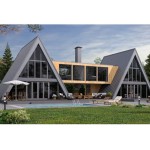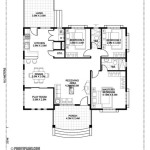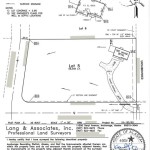2 Story House Plans With Basement And 3 Car Garage Design Ideas
Two-story house plans with basements and three-car garages represent a significant investment in both space and functionality. Such designs cater to families seeking ample living area, storage solutions, and secure parking. These plans often incorporate a blend of aesthetic appeal and practical features, making them a popular choice for modern homeowners. Understanding the nuances of these designs requires careful consideration of several key elements, including layout, structural integrity, and cost-effectiveness.
The popularity of two-story house plans stems from their efficient use of land. Building upwards rather than outwards maximizes the available yard space, allowing for larger gardens, patios, or recreational areas. This is particularly beneficial in areas with high land costs or restrictive zoning regulations. Adding a basement further enhances the efficiency by providing additional living or storage space without increasing the footprint of the house. The inclusion of a three-car garage caters to families with multiple vehicles, hobbies requiring storage such as woodworking or car repair, or simply a desire for extra storage capacity.
Designing a two-story house with a basement and three-car garage involves a complex interplay of architectural and engineering considerations. The foundation must be robust enough to support the weight of the entire structure, including the basement walls, the two stories above, and the loaded garage. Proper drainage is crucial to prevent water damage in the basement, and insulation is essential for energy efficiency. The overall design must also comply with local building codes and regulations, ensuring the safety and structural integrity of the home.
Optimizing Layout and Functionality
The layout of a two-story house plan is critical to its functionality and livability. The main floor typically houses the common areas, such as the living room, dining room, and kitchen. An open floor plan can create a spacious and airy feel, while a more traditional layout provides distinct zones for different activities. The location of the staircase is also important, as it impacts traffic flow and accessibility to the second floor. Ideally, the staircase should be centrally located and easily accessible from both the front entrance and the main living areas.
The second floor typically houses the bedrooms and bathrooms. The master suite is often located at one end of the house, providing privacy and a dedicated retreat for the homeowners. The remaining bedrooms can be configured based on the needs of the family, with options for en-suite bathrooms, walk-in closets, and shared living spaces. Thoughtful consideration should be given to the placement of windows to maximize natural light and ventilation throughout the second floor.
The basement can serve a variety of purposes, depending on the homeowner's needs and preferences. It can be finished to create additional living space, such as a recreation room, home theater, or guest suite. Alternatively, it can be used for storage, a workshop, or a home gym. Proper ventilation and lighting are essential for any finished basement space, and attention should be paid to moisture control to prevent mold and mildew growth. Access to the basement can be provided via an interior staircase and, in some cases, an exterior walk-out entrance.
The three-car garage offers a significant amount of space for parking vehicles and storing tools, equipment, and other items. The garage can be attached to the house or detached, depending on the design and the available space. An attached garage provides convenient access to the house, especially during inclement weather. Detached garages offer greater flexibility in terms of placement and can be designed to complement the overall architectural style of the home. The garage should be properly insulated and ventilated to protect vehicles and stored items from extreme temperatures and humidity.
Structural Considerations and Engineering Challenges
Building a two-story house with a basement and three-car garage presents several structural challenges. The foundation must be designed to withstand the weight of the entire structure and the surrounding soil pressure. The basement walls must be reinforced to prevent collapse under pressure, and proper drainage systems must be installed to prevent water from seeping into the basement. The framing of the house must be strong enough to support the weight of the roof, walls, and floors, as well as any anticipated snow or wind loads.
The design of the roof is another important structural consideration. The roof must be properly engineered to withstand wind and snow loads, and the materials used must be durable and weather-resistant. The roof pitch and overhangs can also impact the overall aesthetic of the house. A steeper roof pitch can add visual interest, while larger overhangs can provide protection from the elements. Proper ventilation of the attic space is essential to prevent moisture buildup and prolong the lifespan of the roof.
The integration of the three-car garage into the overall structure requires careful planning and engineering. The garage floor must be properly sloped to facilitate drainage, and the walls must be strong enough to withstand the impact of vehicles. The garage door openings must be adequately sized to accommodate the vehicles, and the door openers must be reliable and safe. The electrical system in the garage must be properly grounded and protected to prevent electrical shocks and fires. The garage should also be equipped with proper ventilation to prevent the buildup of harmful fumes from vehicles and other equipment.
Ensuring the structural integrity of a two-story house with a basement and three-car garage requires the expertise of qualified architects, engineers, and contractors. A thorough site investigation should be conducted to assess the soil conditions and identify any potential hazards. The design should be reviewed and approved by a structural engineer to ensure that it meets all applicable building codes and standards. The construction should be carefully supervised by experienced professionals to ensure that the work is done correctly and safely.
Cost-Effectiveness and Budgeting
Constructing a two-story house with a basement and three-car garage can be a significant financial undertaking. The cost will vary depending on several factors, including the size and complexity of the design, the materials used, the location of the property, and the labor costs in the area. Developing a realistic budget is essential for ensuring that the project stays within financial reach.
The cost of excavation and foundation work can be substantial, especially if the site requires extensive grading or soil stabilization. The cost of framing the house will depend on the type of materials used and the complexity of the design. The cost of roofing will vary depending on the materials chosen and the size and slope of the roof. The cost of finishes, such as flooring, cabinetry, and appliances, can also have a significant impact on the overall budget.
One way to control costs is to choose cost-effective materials and finishes. For example, using engineered wood flooring instead of solid hardwood can save money without sacrificing durability or aesthetics. Similarly, choosing standard-sized windows and doors can reduce costs compared to custom-made options. Another cost-saving strategy is to prioritize the most important features and finishes and defer less essential items until later, if possible. For instance, the basement can be left unfinished initially and completed at a later date when finances allow.
Obtaining multiple bids from contractors is also crucial for ensuring a competitive price. The bids should be carefully reviewed to ensure that they include all the necessary work and materials. It is also important to check the contractor's references and reputation before making a decision. A reputable contractor will be able to provide accurate cost estimates and manage the project efficiently, helping to keep the project on time and within budget. Contingency funds should be allocated to account for unforeseen expenses that may arise during construction. A contingency fund of 5-10% of the total project cost is generally recommended.
Financing options should be explored early in the planning process. A construction loan may be necessary to cover the costs of building the house. Alternatively, a home equity loan or line of credit can be used if the homeowner already owns property. It is important to compare interest rates and terms from different lenders to find the best financing option. Working with a financial advisor can help homeowners assess their financial situation and make informed decisions about financing their home construction project. A well-planned budget and careful cost management are essential for ensuring the successful completion of a two-story house with a basement and three-car garage.

Stylish And Smart 2 Story House Plans With Basements Houseplans Blog Com

Stylish And Smart 2 Story House Plans With Basements Houseplans Blog Com

3500 Sf 4 Bedroom Single Story Home Plan 3 Bath Basement Garage Car Chicago Peoria Springfi Level House Plans

Stylish And Smart 2 Story House Plans With Basements Houseplans Blog Com

Pendleton House Plan Most Popular Modern Farmhouse Home Design Main Floor Primary Mf 2639

3 Car Garage House Plans Quality From Ahmann Design Inc

2 Story Architect Home 4 Bedroom Open Floor Plan Front Porch Blueprints Drawings House Plans One Basement

3 Car Garage House Plans Quality From Ahmann Design Inc

1 Story House Plans And Home Floor With Attached Garage

10 House Plans With Three Car Garages Houseplans Blog Com
Related Posts








